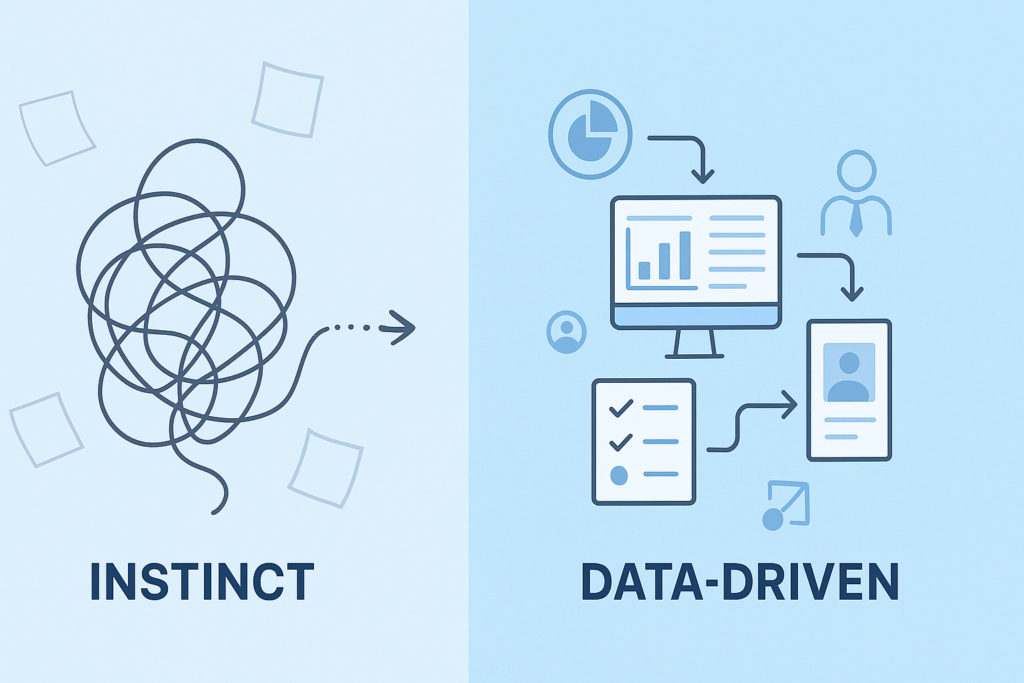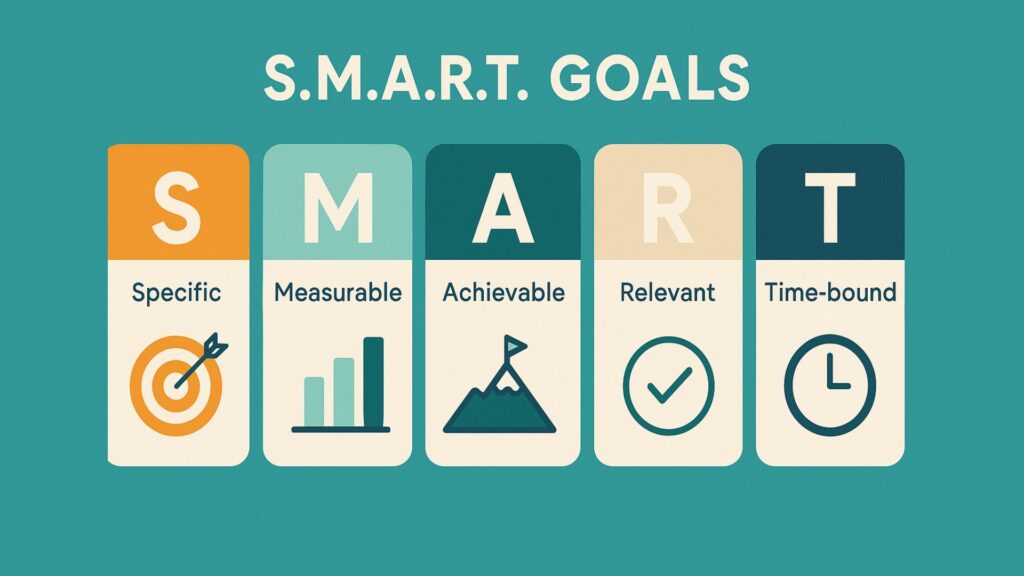While industries are flooded with content, most organizations struggle to deliver the right message at the right time. Nearly 60% of marketers agree that achieving this timing is a major challenge, yet few have a clear system to evaluate what’s working and why. Without data as the backbone of decision-making, content strategies become guesswork, leading to wasted time, budget, and creative energy.
A data-driven content strategy turns content into a measurable business asset. By leveraging behavioral insights, content performance analytics, and automated workflows, teams can close content gaps, improve personalization, and optimize spend. It’s not just about producing more but about producing smarter. Whether you’re planning your next campaign or auditing existing assets, a well-structured, insight-led approach ensures every piece of content contributes to growth, engagement, and ROI.
What Are Data-Driven Content Strategies?
A data-driven content strategy uses insights, not intuition, to guide the planning, creation, deployment, and optimization of content. Instead of relying on assumptions or vanity metrics, these strategies are anchored in real-time behavior, performance trends, and audience signals. The goal is to make smarter decisions about what content to create, when to deploy it, and whom it should reach.
Data-driven content strategies unlock higher ROI, enable greater content personalization, and align marketing efforts with measurable business outcomes. They also help reduce content waste, accelerate production cycles, and deliver more consistent brand experiences across every channel.

Aligning Content With What Audiences Actually Want
When content is based on what audiences do rather than what they say, it becomes significantly more effective. Behavioral analytics, heatmaps, scroll depth, click-through rates, and in-market engagement data provide a clearer picture of what resonates. Content intelligence removes guesswork from ideation and allows marketers to prioritize topics, formats, and channels that drive results.
Implement tools that monitor engagement behavior across assets and pages, then use that insight to shape your editorial calendar and asset mix.
Closing Gaps Between Performance and Production
Content strategies often fall short not because of poor ideas but because of poor alignment. Without performance insights looped back into the content planning process, teams tend to duplicate efforts, misallocate resources, or ignore underperforming assets. A data-driven approach connects performance data directly to the content lifecycle, ensuring every future piece is better informed than the last.
Run regular content audits that correlate production output with performance benchmarks. Use this to surface content gaps, identify redundancies, and align efforts across teams.
Turning Insights Into Actionable Intelligence
Collecting data is easy, but turning it into meaningful action is what sets mature strategies apart. The most effective teams use AI and automation to surface insights that lead to specific content optimizations: reworking headlines, changing formats, or even retiring assets entirely. The result is better content, faster decisions, and leaner operations.
Adopt intelligent tools that highlight high- and low-performing assets, and automatically recommend next steps based on contextual performance.
Laying the Foundation: What You Need to Get Started
Before diving into tools or dashboards, the success of any data-driven content strategy hinges on having the right foundations in place. Your brand should align around clear goals, organize the right data inputs, and decide what success truly looks like for your team. Without this groundwork, even the most advanced platforms can lead to fragmented or directionless efforts.
A well-structured foundation ensures that every content decision is rooted in strategy, not just reactivity, and that performance data translates into long-term value rather than short-term wins.
Setting Strategic Goals That Can Be Measured
Data is only valuable if it maps back to a defined objective. Too often, teams collect metrics without knowing what they want to improve. Are you trying to boost conversions, improve content reuse, or shorten production timelines? Setting SMART goals—specific, measurable, achievable, relevant, and time-bound—brings focus to your data initiatives and creates alignment across stakeholders.
Define two to three core objectives tied to business impact, such as increasing asset reuse by 20% or reducing campaign cycle time by 30 days. Let these guide your KPIs and tool selection.

Mapping Data Sources Across the Content Lifecycle
Every phase of the content lifecycle generates valuable signals, from planning and production to distribution and performance. Mapping where your data comes from (and where it should come from) ensures that insights don’t fall through the cracks. Consider everything from CMS analytics and DAM (digital asset management) engagement to sales enablement tools and marketing automation platforms.
Conduct a “data source audit” to inventory current systems, identify blind spots, and determine where integrations or automation could unify fragmented insights.
Choosing the Right Metrics for Your Use Case
Not every metric matters equally. Impressions and likes may be useful for awareness campaigns, but they won’t guide a content operations team trying to improve efficiency or reduce costs. The right metrics reflect both performance and process. For example, asset findability, reuse rates, approval time, and ROI by content type can be far more actionable than general traffic data.
Build a core KPI dashboard that tracks a mix of volume, efficiency, and outcome-based metrics. Revisit it monthly to ensure relevance as goals evolve.
Build Smarter: Key Elements of a Data-Driven Content Strategy
Once the groundwork is in place, building an effective data-driven content strategy means embedding insight into every decision and asset. From segmentation to performance feedback, modern teams are expected to deliver more relevant, personalized content faster and at scale.
These elements ensure your strategy is adaptive, modular, and informed by actual user needs in real time.
Audience Segmentation Based on Behavior, Not Assumptions
Demographics alone no longer tell the full story. Behavioral segmentation using actual actions like search queries, asset engagement, scroll depth, or content downloads offers a clearer lens into what your audience values and how they consume content. You can achieve more precise targeting and support true personalization across channels.
Use behavioral analytics tools or your DAM’s built-in intelligence to group users based on how they interact with content, not just who they are. Tailor messaging accordingly.
Content Gap Analysis and Modular Planning
Rather than producing net-new content for every request, modular content strategies let you mix, match, and reuse proven blocks across formats and campaigns. But to work well, you need data to expose where gaps exist, whether it’s missing formats for a persona or underperforming stages in the buyer journey.
Perform quarterly content gap analyses using performance data mapped to funnel stages, personas, or segments. Plan modular content pieces to efficiently fill these gaps.
Performance Feedback Loops to Iterate in Real Time
Data-driven strategies aren’t static. They adapt continuously through feedback loops that tie content performance back into planning. The most agile teams use real-time insights to optimize content mid-campaign, retire underperforming assets, and replicate successful ones faster.
Implement feedback loops using dashboards that visualize content impact. Pair that with agile workflows that allow teams to act on insights without waiting for end-of-quarter reviews.
Tools, Tech, and Processes That Bring Your Strategy to Life
No matter how well-defined your strategy, execution falters without the right infrastructure. Turning insights into outcomes requires tools and processes that can surface, analyze, and act on data, ideally in real time. These technologies help orchestrate campaigns, automate decision-making, and eliminate manual bottlenecks.
From AI-powered automation to integrated systems that span the entire content lifecycle, explore the core enablers behind successful data-driven content strategies and why the right stack is critical to scale and sustainability.
Intelligent Workflows and Automation at Scale
Content operations move too fast and audiences shift too often for manual processes to keep up. Intelligent workflows allow marketers to automate repetitive steps like routing, approvals, tagging, or versioning, freeing teams to focus on valuable creative tasks. These workflows also embed governance and compliance directly into the process, ensuring that content moves faster and smarter.
As campaigns scale, so does the risk of dropped tasks or siloed data. Automation is a time-saver and a safeguard. When tied into your content strategy, these smart workflows help ensure the right people review the right content at the right time. They can flag issues, trigger actions, and enforce consistency across distributed teams, reducing lag and costly rework.
Predictive Metadata and AI-Powered Search
Modern content ecosystems demand more than folder structures and manual tagging. Predictive metadata powered by machine learning can analyze file types, extract key information, and apply taxonomies based on usage context. Assets become easier to find, evaluate, personalize, and repurpose.
Combined with AI-powered search, predictive metadata transforms how users interact with content libraries. Instead of guessing filenames or keywords, marketers can describe a campaign theme or desired tone and receive accurate, relevant results. Building AI into your processes accelerates production timelines and reduces dependency on tribal knowledge, making content universally accessible across regions, teams, and functions.
Closed-Loop Reporting for Continuous Optimization
Too often, reporting is treated as a backward glance at what has already happened. In a data-driven strategy, reporting becomes a real-time feedback loop that informs every decision. Closed-loop reporting connects asset performance, audience behavior, and business outcomes to reveal what’s working and where improvements are needed.
This kind of reporting doesn’t live in spreadsheets. It’s built into your tools, updating automatically as content is consumed. By tracking engagement across channels, marketers can quickly identify top-performing formats, retire low-impact assets, and reallocate budget based on ROI. Over time, these insights compound, helping teams get better, faster, and more focused with every campaign.

Common Pitfalls to Avoid When Going Data-Driven
While the promise of data-driven content strategies is compelling, implementation isn’t always smooth. Many teams underestimate the cultural shifts, system alignment, and analytical maturity required to make the model work at scale. And in the rush to modernize, it’s easy to fall into common traps that stall progress or deliver misleading results.
Discover three of the most common pitfalls organizations encounter and how to avoid them. From mistaking quantity for quality to treating data like a passive report card, these missteps can quietly erode the effectiveness of even the most well-intentioned strategies.
Mistaking Volume for Value in Content Output
One of the most frequent mistakes teams make is equating a full content calendar with an effective one. In the push to “stay visible,” organizations often flood channels with content that lacks purpose, personalization, or clear value to the audience. This approach can actually dilute brand equity and exhaust internal resources without moving the needle on performance metrics.
A truly data-driven strategy prioritizes resonance over reach. Rather than increasing volume, high-performing teams focus on impact: which pieces convert, which support the customer journey, and which align with brand goals. This often means producing less content while investing more in format diversity, testing, and performance analysis to ensure each asset earns its place in the mix.
Collecting Data Without an Activation Plan
Having access to analytics tools and dashboards doesn’t guarantee strategic outcomes. Many teams gather impressive amounts of data but fail to translate it into action. “Data hoarding” is especially common when insights are living in separate systems or are only accessible to specific teams. The result is analysis paralysis, where decision-makers are overwhelmed or under-informed.
Data must be treated as a living part of the strategy, not an afterthought. Successful organizations establish clear protocols for how insights inform planning, reviews, and iteration. They connect KPIs to specific workflows and empower teams to act on findings in real time. In short, they operationalize their data instead of just collecting it.
Relying on Siloed Tools That Don’t Share Insights
Tech stack fragmentation is a silent killer of data-driven ambitions. When DAMs, CMSs, CRMs, and analytics platforms don’t communicate, insights get lost and duplicated work increases. Content delivery slows down, and inconsistencies undermine brand trust and user experience.
Integration is key to achieving full visibility across the content lifecycle. By connecting systems through APIs or adopting platforms with composable architecture, teams can ensure that data moves seamlessly from content planning to performance reporting. Having a unified ecosystem allows marketers to track content from ideation to impact and make smarter decisions at every stage.
Real-World Wins: What Success Looks Like
Organizations that embrace data-informed content strategies are seeing measurable improvements in content velocity, audience engagement, and return on investment. These are business-level outcomes with long-term impact.
Explore what success looks like when data and strategy align. From streamlining workflows to unlocking personalization at scale, these examples highlight the operational and revenue-driving value of building a content engine powered by insight, not guesswork.
Faster Time-to-Market With Automated Reviews
For most teams, the review and approval process is one of the biggest bottlenecks in content operations. Manual routing, unclear ownership, and compliance delays can stretch production cycles by weeks. With data-informed workflows, companies can dramatically reduce time-to-market by automating reviews based on content type, asset metadata, or risk indicators.
Automated routing enforces governance while keeping creative teams agile. When review workflows are tied to smart triggers like AI-detected brand violations or missing metadata, content moves through the system faster and more securely. The result is higher output without sacrificing compliance or quality control.
Higher Engagement Through Real-Time Personalization
Personalized content consistently outperforms generic messaging, but true personalization requires more than just first-name merge tags. With real-time behavioral insights and AI-powered tagging, brands can now deliver dynamic content that adapts to user context, such as location, device, history, and in-session actions. Precision drives deeper engagement and relevance.
By integrating personalization rules with content data, such as tagging assets by audience segment, tone, or format, marketers can automate the decision-making process across channels. A single campaign can serve multiple audience variations without requiring duplicate production efforts, leading to higher engagement rates with less strain on creative resources.
Strategic Spend Optimization Across Campaigns
A less obvious but critical win for data-driven content operations is better budget alignment. Without visibility into which content drives outcomes, it’s easy to overspend on ineffective formats or miss opportunities for reuse. Data-informed planning surfaces which assets deliver ROI and where investment should be reallocated for maximum impact.
For example, performance dashboards that track content utilization, engagement, and conversion can reveal underperforming segments early, allowing marketers to pivot before the budget is exhausted. Over time, this allows for more strategic forecasting, more efficient production planning, and a tighter link between content spend and business goals.
Transform Your Content Strategy With Data
The most successful content strategies are shaped by insight, refined through iteration, and aligned to real business outcomes. By embracing a data-driven approach, you give your team the power to create content that connects, performs, and scales.
With Aprimo, marketing teams can operationalize their data and bring strategy to life across every phase of the content lifecycle. From AI-powered planning and content intelligence to dynamic personalization and automated compliance, we help organizations move faster, collaborate smarter, and prove impact at scale. Book a demo today and unlock the full potential of your content.


